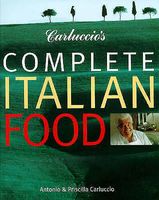Label
All
0
Clear all filters
Cassata
Appears in
By Antonio Carluccio and Priscilla Carluccio
Published 1997
Cassata gets its name from qus’at, the Arab word for the small conical container in which the dessert is traditionally made. It used to be made only by nuns during Holy Week, but is now available all year round. There are two versions of the dish, both of which come from Sicily, where it was created. The first is a cake made with marzipan, ricotta and candied fruit; and the second, a later development, made with ice-cream. A smaller version of cassata, called cassatina, is often sold in Sicilian bars, cafés and pastry shops.
Part of
Advertisement
Related Recipes
-
-
-
-
Related Reference
-
-
-
-
Advertisement
The licensor does not allow printing of this title




